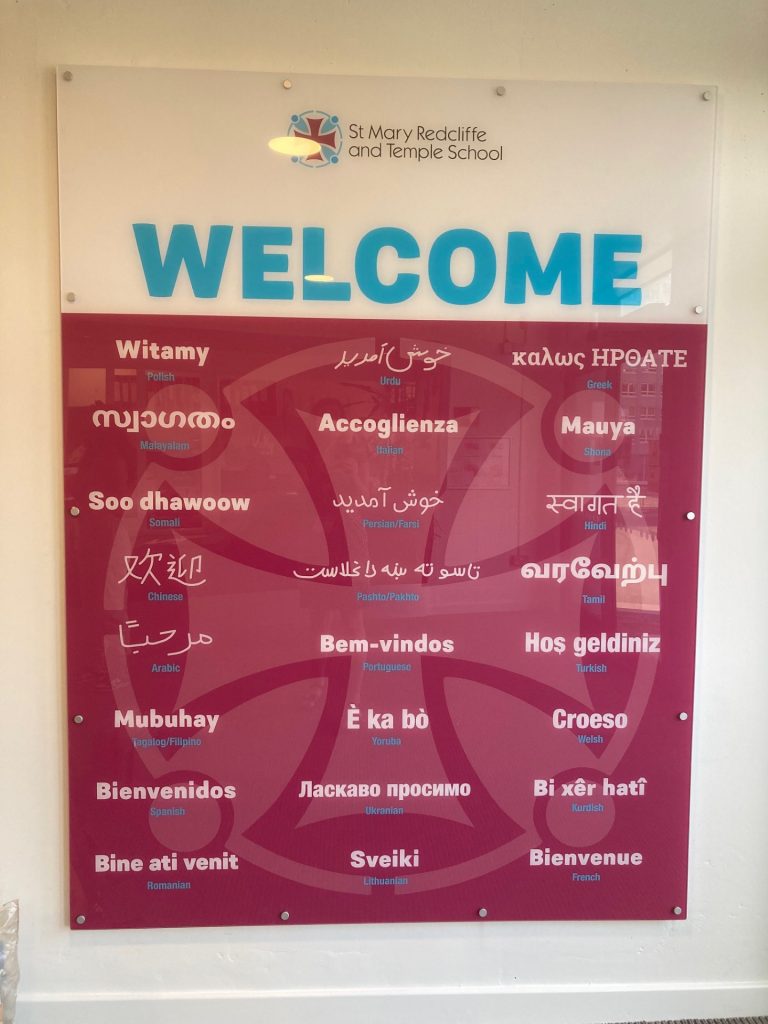
What is meant by EAL (English as an Additional Language)?
EAL is a DfE descriptor to acknowledge children and young people with a number of languages in their lives.
- The DfE characterises a pupil as having ‘English as an Additional Language’ or ‘EAL’ if their first language is other than English.
- ‘A pupil’s first language is defined as any language other than English that a child was exposed to during early development and continues to be exposed to in the home or community.’
- ‘If a child was exposed to more than one language (which may include English) during early development, a language other than English should be recorded, irrespective of the child’s proficiency in English.’
-
- ‘This measure is not a measure of English language proficiency or a good proxy for recent immigration.’
Local Authority Funding Formula Factors for 2022 to 2023
There are 14 funding factors in 2022 to 2023. English as an additional language (EAL) is one of those factors, although it remains ‘optional’.
Pupils identified in the October census with a first language other than English may attract funding for up to three years after they enter the statutory school system.
- Local authorities can choose to use indicators based on one, two, or three years, and there can be separate unit values for primary and secondary.
- The department has used three years in the national funding formula; local authorities should consider this when setting their local formula.
The information above is an excerpt from Stephen Bray’s helpful EAL Funding 2022-23 guidance, which you can download in full by clicking here
For further information, Catherine Brennan has written a blog entitled ‘Accessing accurate funding for your EAL pupils through the October Census’ for Diverse Educators which you can read here:
EAL Training Opportunities
Click through to our CPD page here for full details of upcoming CPD.
We highly recommend the following websites to support the development of provision for children and young people learning through English as an Additional Language (EAL) in educational settings:
NALDIC: https://naldic.org.uk/
‘NALDIC is the national subject association for English as an additional language. NALDIC provides a welcoming, vibrant, professional forum for learning more about English as an Additional Language (EAL) and bilingual learners in schools. You don’t have to be an EAL teacher or EAL specialist to join us. We welcome members from a range of settings, schools and organisations. Our mission is to promote the effective teaching and learning of EAL and bilingual pupils across the UK.’
The Bell Foundation: https://www.bell-foundation.org.uk/
‘At The Bell Foundation we believe that all children, including those who speak English as an Additional Language, should have the opportunity to fulfil their potential. There are now over 1.5 million pupils in UK schools with EAL, a figure which has more than doubled over the last ten years. This number continues to increase, with a fifth of primary pupils (21.2%) and 16.6% of UK secondary school pupils now classified as EAL…The aspiration of our EAL programme is to improve the educational outcomes of disadvantaged children in the UK who have English as an Additional Language, in order to benefit the individual child and society as a whole.’
EAL Nexus: https://ealresources.bell-foundation.org.uk/teachers
‘Whether you are a teacher with a high percentage of learners with English as an Additional Language (EAL) in your class or your school has a few new arrivals this website is for you. It provides the advice and resources to help you effectively assess, teach and support them within the curriculum.’
NEW! EAL Resources for Teachers & Parents from The Bell Foundation
1. FOR TEACHERS – ‘Working with parents to support the learning of puils who use EAL: Guidance for schools’
‘The Bell Foundation has developed guidance to support practitioners to work with the parents of learners who use EAL with the aim of improving learning outcomes. The guidance draws on research around parental involvement and offers practical recommendations for schools on how to maximise parental involvement.’
Click here to access this guidance document.
2. FOR PARENTS – ‘Guidance for parents of students who use English as an Additional Language’ – translated into 11 community languages (FREE)
‘The Bell Foundation has created a short, easy to understand guide for parents of students who use English as an Additional Language. The leaflet is available in the 11 most commonly used first languages in UK schools and is designed to help parents to get involved in school life and to help their child to learn.’
Translated versions available in: Arabic, Bengali, Bulgarian, Chinese, Gujurati, Lithuanian, Polish, Punjabi, Romanian, Somali & Urdu.
Click here to access this guidance document in English and translated versions.
USEFUL RESOURCES:
Guidance on the assessment of EAL pupils’ proficiency in English
British Council EAL Nexus Resources
Newbury Park language of the month: interactive video clips and resources
Collaborative Learning Project
Multilingualism is integrative blog
Inside the mind of a successful language learner blog
Speaking in your home language – advice for bilingual parents and carers